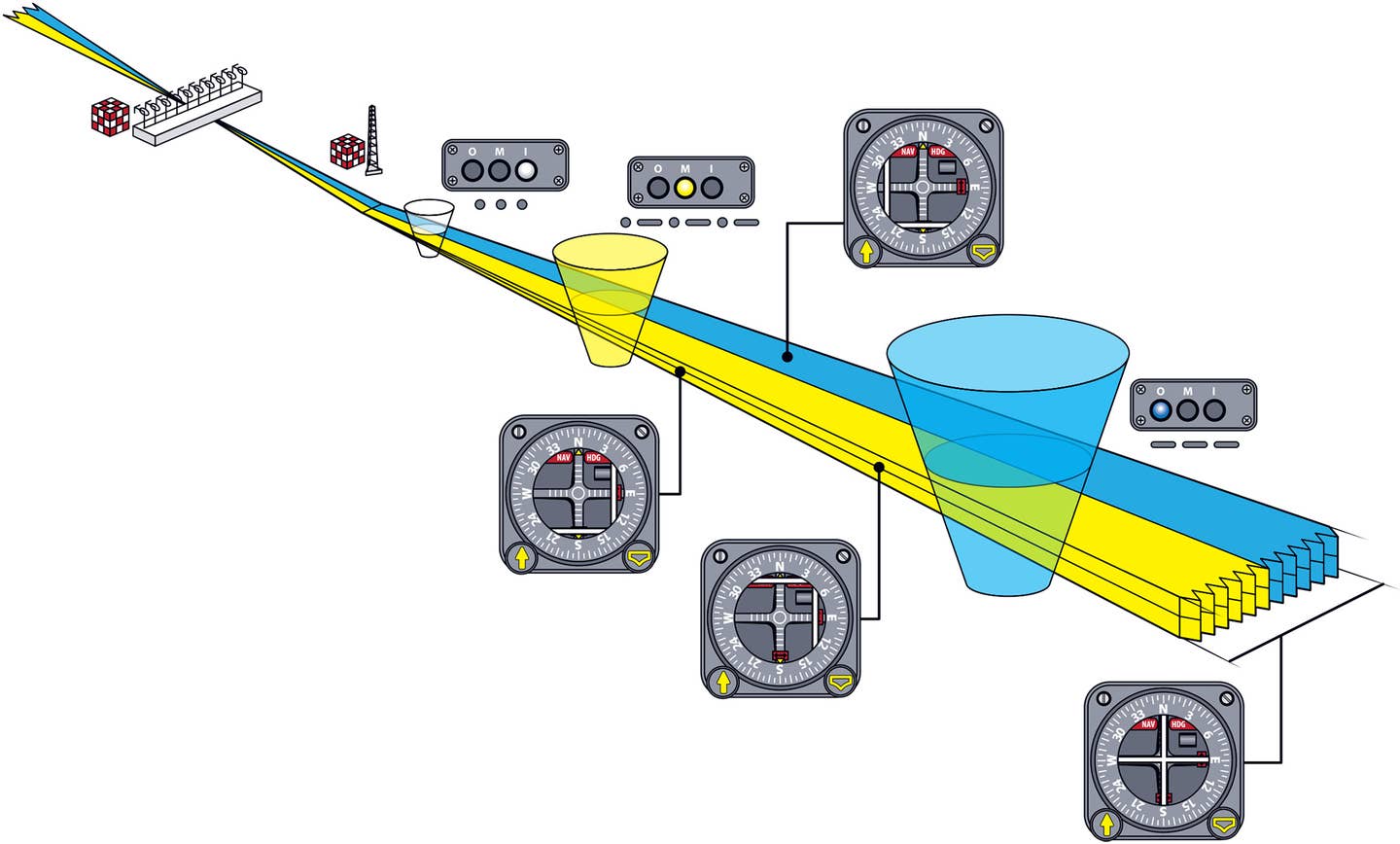
An instrument landing system (ILS) uses two separate ground-based radio transmitters to provide both lateral and vertical guidance to pilots during an instrument approach procedure that normally includes the lowest landing minimums. A Category I ILS approach, for example, typically offers a 200-foot decision height above the ground. ILS approach visibility minimums are measured either in statute miles or by using runway visual ranges down to zero-zero for a Category IIIc ILS approach. (Approaches of Cat 2 and greater require special flight crew certification.)
(Scroll over the interactive image below for more details.)

One ILS transmitter, called the localizer, offers the pilot accurate left-right guidance to a predetermined missed-approach point near the runway threshold. Localizer needle movements on the cockpit display are similar to what a pilot would see navigating with a VOR and include a vertical needle that moves left and right to indicate the position of the localizer signal. The other transmitter, known as the glideslope, provides a directional signal that delivers precise vertical guidance. In the cockpit, the pilot will also see another needle positioned horizontally, co-located with the localizer indicator, that moves up and down the face of the instrument to point to the glideslope.
Some ILS approaches include distance indicators known as marker beacons, labeled as outer, middle and inner markers. The outer marker is normally co-located with the final approach fix. Some installations co-locate a low-frequency nondirection beacon with the outer marker to create a complete approach to align an aircraft inbound on the ILS.
Although the left-right course indications might look similar to those of a VOR, the localizer receiver becomes four times more sensitive when tuned to an ILS. That fact translates into ILS signal parameters that become tighter as the aircraft approaches the end of the runway, meaning the pilot must be prepared for smaller and smaller corrections to remain on course and on glideslope. It is the pilot’s task to learn the precise speed, rate of descent and aircraft configuration needed prior to intercepting the ILS that will allow the needles to remain crossed like a huge plus sign, indicating the aircraft is on the localizer course and on the glideslope. For instance, at the outer marker, normally 4 to 6 miles from the end of the runway, a one-dot deviation means the aircraft is about 500 feet off the centerline. Closer in, such as crossing the middle marker within a mile of the end of the runway, that same one-dot deflection translates into 150 feet off the centerline. At the middle marker, one dot high or low on the glideslope translates into flying 50 feet high or low.
In some locations, the localizer emits a signal strong enough to be usable when approaching the airport from a position opposite to the front course signal used for a standard ILS approach. For instance, the Runway 1 ILS localizer at Chicago Rockford International transmits a solid signal to the north, allowing arriving aircraft to use it for lateral guidance on a back-course Runway 19 approach. Should a glideslope for some reason fail, approach procedures allow a pilot to execute a localizer-only approach to higher minimums, which transforms an ILS from a precision guidance system into a nonprecision approach. There is, however, no option for a glideslope-only approach.
Proper approach lighting is a necessary element of an ILS and normally includes the runway’s approach lighting, as well as touchdown and runway centerline lights in addition to the standard runway lighting.

Sign-up for newsletters & special offers!
Get the latest FLYING stories & special offers delivered directly to your inbox






